Energy gels, those small pockets of power, have become a staple in the triathlete’s larder. Where once their viscosity reached such extreme levels that it was like squeezing out the remnants of toothpaste and proved equally hard to swallow, nowadays the best energy gels have struck a palatable balance between fluid and solid.
That makes them ideal for the run where water might not be to hand, though, as you’ll see, many still benefit from a water chaser.
When should you take energy gels?
Energy gels have become a staple in the triathlete’s larder, their culinary convenience meaning you can bike and run to your heart’s content loaded. But when exactly should you use these speed-and-stamina sachets?
It’s a broadly sweeping brush but they’re not really needed unless you’re exercising for over 90mins. That’s based on your glycogen stores being at capacity through a healthy, energising daily nutrition plan, which highlights that supplements like these aren’t maximised unless you’re fuelling proficiently as the norm, not on occasions. That means good-quality carbs, muscle-repairing and rebuilding protein, good fats, and vitamins and minerals.
How many gels should you consume on longer sessions or racing? The ideal is an individualised prescription or, more likely, through trial and error in training. Start with around 50g of carbs an hour (about two gels) and slowly consume more if you can stomach it over time. More calories delays fatigue resulting in a PB. Time for the test…
Best energy gels in 2024
SiS Beta Fuel Gel

Beta Fuel's been around for a while, but only in powder form. The orange gel tested here is made of a newly developed blend of maltodextrin to fructose in a 1:08 ratio, which delivers a hefty 40g of carbs.
SiS's studies identified this split as optimum, increasing the percentage of oxidised carbs from 62% to 74%. We can’t verify that without a lab, but the texture and taste is great, and it digests smoothly. Impressive.
Verdict: Cracking new gel from the energy behemoth that is SiS.
Score: 87%
Aptonia Energy Gel
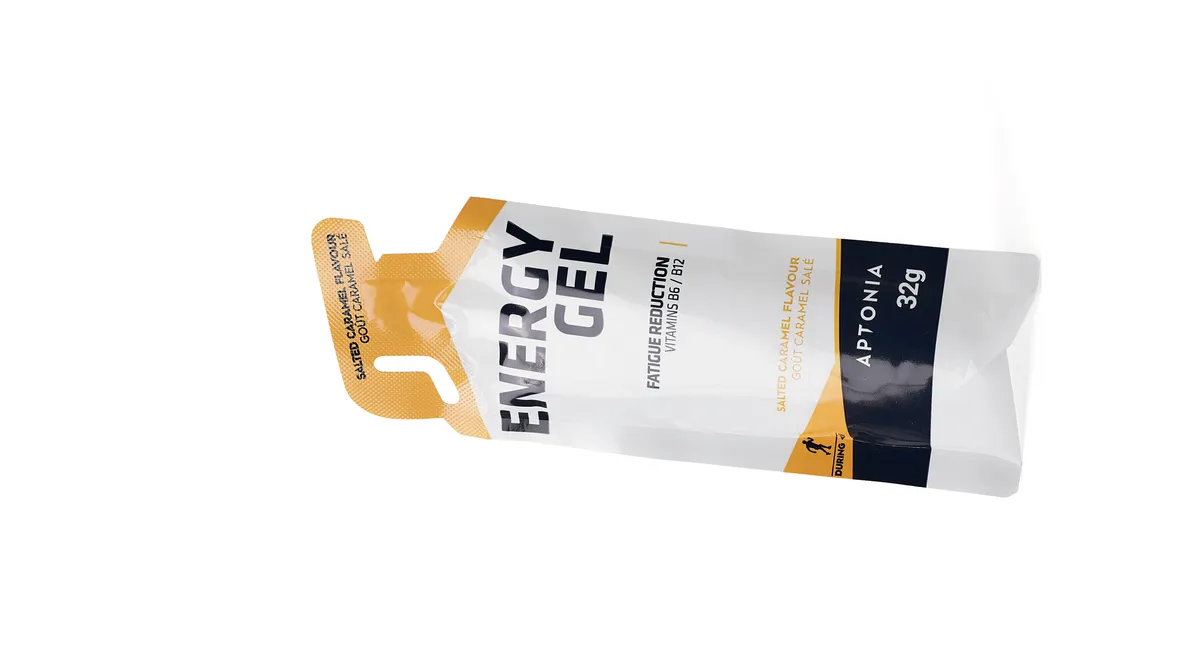
The first incarnation of this gel was face-achingly sweet, but, thankfully, the Decathlon-distributed brand has since dropped the butter and toned down the viscosity and sweetness to create a delicious burst of energy.
That burst is 23g of carbs (derived from a mix of glucose, fructose and maltodextrin) per 32g gel, which is impressive as, unlike its rivals here, it leaves little volume for water.
Despite that, it’s effortlessly consumed, but you might want to complement it with other gels the longer you train to avoid flavour fatigue, and, as always, test before racing. It’s also loaded with vitamins B1, B6, B12, E and zinc, stated as 30% RDA for each, and is a fine price (£2 per hour). Top stuff.
Verdict: Welcomed improvements and great value.
Score: 86%
High5 Energy Gel

High5 is known for stirring up credible products at good prices. These work out at around £1.57 each, which isn’t bad, but they’re also around 40p more expensive than a standard High5 gel. So why the price hike?
Firstly, is the addition of isomaltulose, which has a lower GI than glucose and is digested more slowly. This stream of sugar avoids blood spikes so you can sustain a higher effort for longer. Without access to a lab that’s hard to assess, but we didn’t experience any stomach problems (23g per 62g sachet leaves plenty of room for water) or bonking.
The gel has also been enhanced with 70 ocean minerals for electrolyte top-up, albeit trace amounts. Still, it’s a credible addition. highfive.co.uk
Verdict: Goes down well but not the same value for money.
Score: 79%
OTE Lemon and Lime
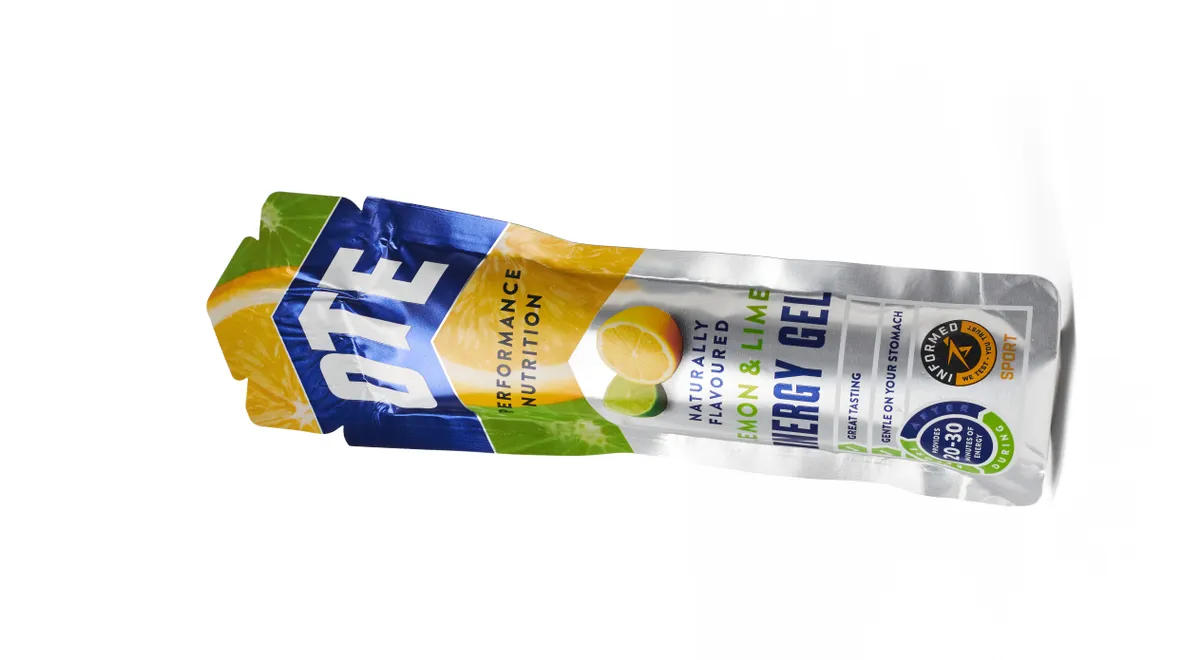
The viscosity of this lemon and lime gel’s similar to High5, so flows smoothly. It’s also rather tasty thanks to the fruit-juice concentrate, but thanks to the alchemy of food science, that concentrate features lemon and apple rather than lime.
Each 56g sachet comprises 20.5g of carbs via fructose and maltodextrin. That’s the lowest on test, which raises the palatability stakes but lowers value for money as, if you’re aiming for a pretty standard 60g carbs per hour, you’ll need three of these (or £4.80).
Ease of use is OTE’s byword with two opening options – tear to sip or tear to gulp. Because of its fluid-like status, we always tend to gulp. That’s a personal thing, but worth noting. otesports.co.uk
Verdict: Does a decent job and will appeal to many.
Score: 78%
SiS Isotonic
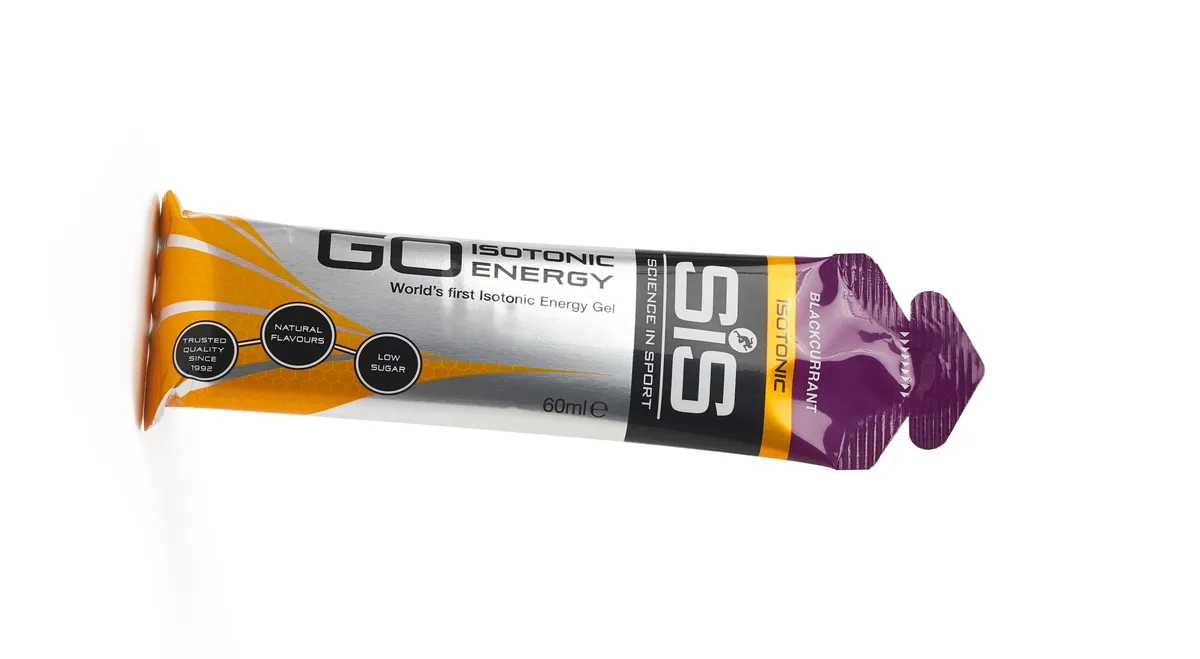
SiS’s product range has grown beyond recognition, but it’s the long-standing Go Gel that continues to eclipse it. Like times gone by, the Go Gel delivers 22g of carbs per 60ml serving from maltodextrin with water filling out the remainder.
As High5 and OTE’s offerings showed, this easy-flowing composition’s standard these days. But ‘more experienced’ triathletes will remember gels of the past resembling toothpaste.
If you had no water chaser, your gums would cling together. SiS’s isotonic option changed all that. As for taste, blackcurrant’s tasty and much nicer than the fruit-salad alternative that we’ve tested before. Value’s good, though you’ll need three per hour (£4.50).
Verdict: A timeless classic that still delivers.
Score: 85%
Torq Performance Energy Gel
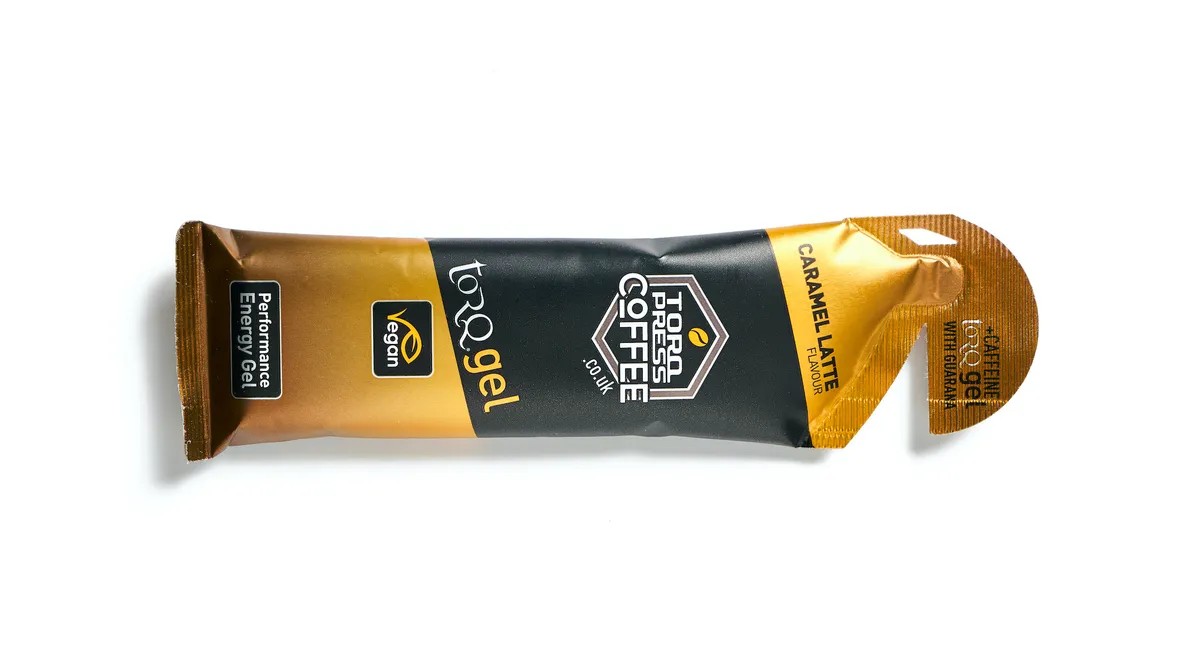
This new gel from Torq hit the textural sweetspot: not so loose that it flows like fluid, not so thick that it resembles tar. Its consistency’s apt for its sweet caramel taste, and it’s really rather delicious. Though you might only want a couple per long session before delight turns to distress.
Carbs make up 28g (112kcals) per 45g serving from both maltodextrin and fructose sources. This sugary blend’s been shown to absorb into the bloodstream via different intestinal pathways, helping to prevent gastro issues while raising the potential to consume greater quantities of carbs. There’s an 89mg caffeine hit from guarana, and its compact shape fits neatly in your rear pockets on both the bike and run.
Verdict: Another impressive product from Torq.
Score: 87%
High5 Electrolyte Energy Gel
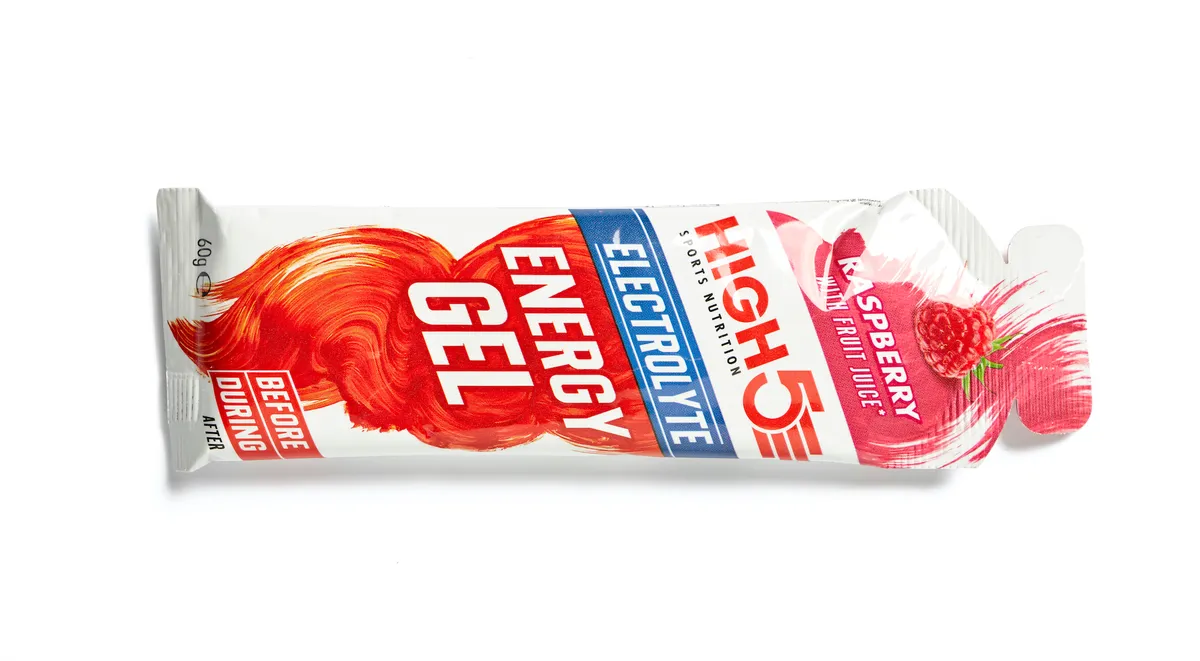
There’s much to be said for the power of placebo. That applies to this gel from High5. It’s a delightful-enough raspberry flavour that glides down smoothly, but its consistency is very loose, meaning you don’t enjoy that perceptual hit of consuming a more solid dose of performance-boosting sugar.
That perception’s explained by its composition, with just 23g carbs swimming about in the 60g sachet. Dropping that to 50g would crank up the viscosity and tick more of our gel boxes. Arguably that greater fluid hit’s appreciated on the run if you don’t have a drink readily available. High5’s recycling programme is a huge USP: buy a box and the UK company includes a pre-paid envelope to return your empty wrappers.
Verdict: Good product, good price, superb eco USP.
Score: 77%
Healthspan Elite Energy Gel Caffeine
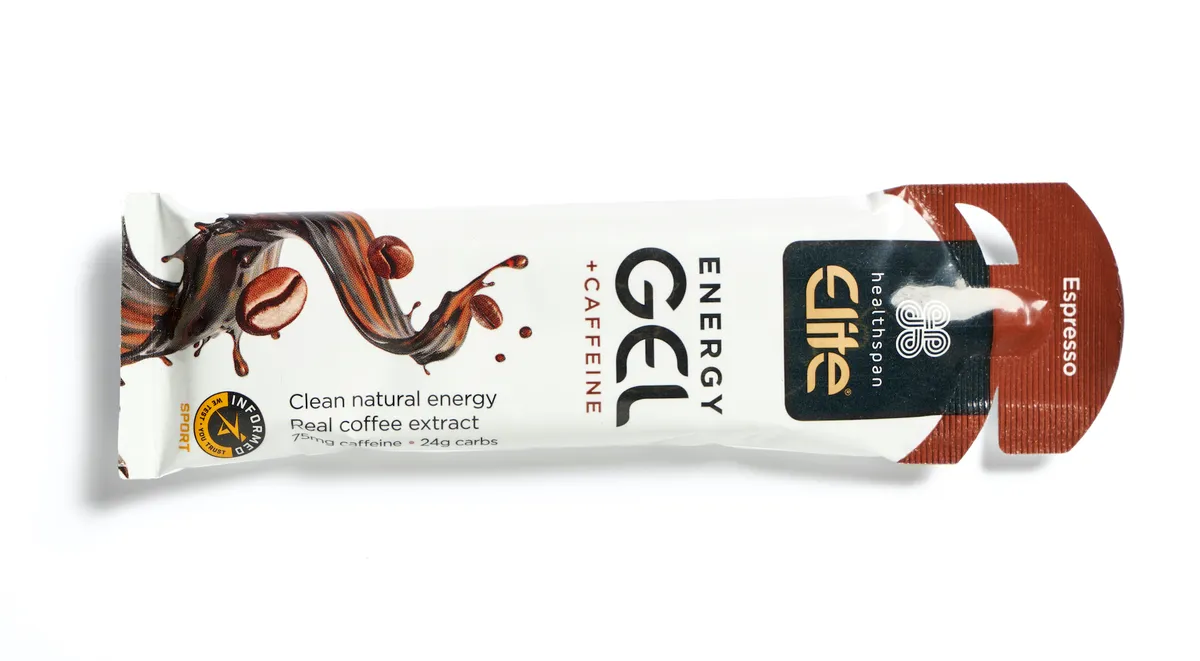
Several of the gels on test include caffeine and we can see why. It’s arguably the most studied ergogenic around, its mooted benefits including the ability to train harder by playing around with your brain’s neuro-receptors.
The majority of studies see improvements at around the 200-400mg level, which is why the 75mg in this 60g sachet should complement a caffeinated beverage hit pre-session. We’d also time ingestion around 20-30mins before a hard section, like a hill, to maximise its effectiveness.
As for carb content, you’re looking at 24g (96kcals) via the proven 2:1 maltodextrin-fructose combo. It’s easily consumed without water, explaining its fluid consistency, which does dilute the perceptive caffeine kick (and flavour) somewhat. Still, it’s ideal on a run.
Verdict: Does a decent, if not spectacular, job.
Score: 76%
Applied Nutrition Velocity-Fuel Sprint Isotonic Energy Gel
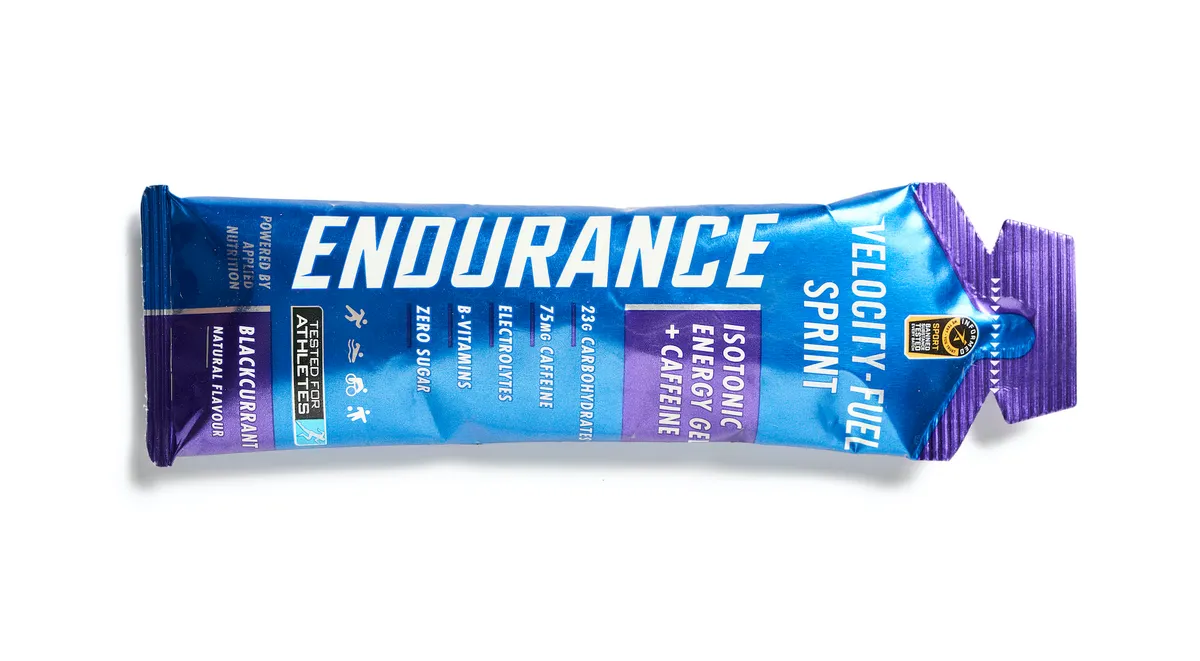
This gel is both marketed as containing 23g carbs, which looks like it’s derived from maltodextrin, and zero sugar.
Technically, maltodextrin is extracted from starchy foods such as potato corn but, as the US Food and Drug Administration proclaimed in 2018, it still counts as a sugar as it’s created through controlled hydrolysis. However it’s dressed up, it still leads to a spike in blood glucose, which is what you’re after in a gel, of course.
Zero sugar for triathletes is an electrolyte drink that’s shorn of carbs. It feels like the manufacturer’s trying to appeal to both markets with confusing results. It’s isotonic, there’s a 75mg caffeine hit, and the flavour is moderate.
Verdict: An affordable, but confusing, product.
Score: 69%
Precision Fuel 30 Gel
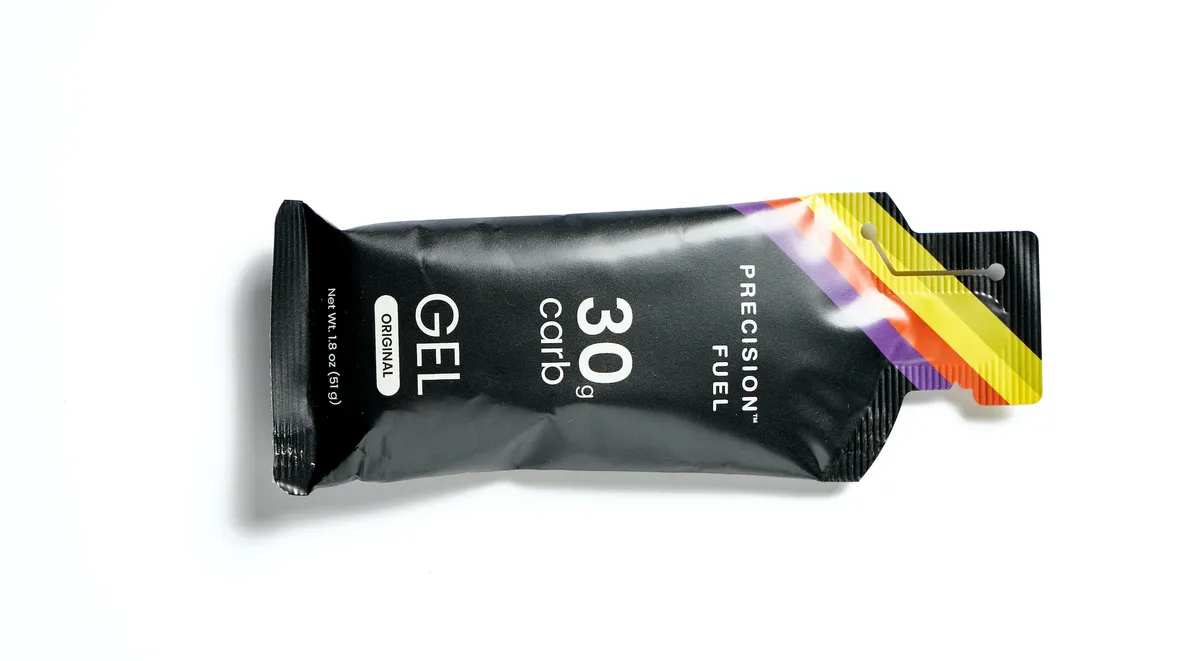
Precision Fuel is the energy-delivering arm of Precision Fuel & Hydration, formerly known as Precision Hydration. That maelstrom of monikers is down to the UK company recently expanding their range from solely electrolyte products to energy drinks, chews and gels. And if the latter’s anything to go by, we’re in for a nutritional treat.
First up, texture, which is thicker than your normal gel but pleasingly (thin) jelly-like rather than cloyingly toothpaste-like. Flavour’s neutral, which is appreciated, especially if it’s a long run and you’re complementing with other flavoured offerings.
Each 51g sachet – compact packaging means you can store many in your tri-suit – contains 30g carbohydrates from a classic 2:1 glucose-to-fructose ratio. And we appreciate the ‘30g carb’ stamp on the front to clearly monitor your fuelling intake.
Verdict: Impressive debut from the sultans of sodium.
Score: 86%
Vala Energy Gel
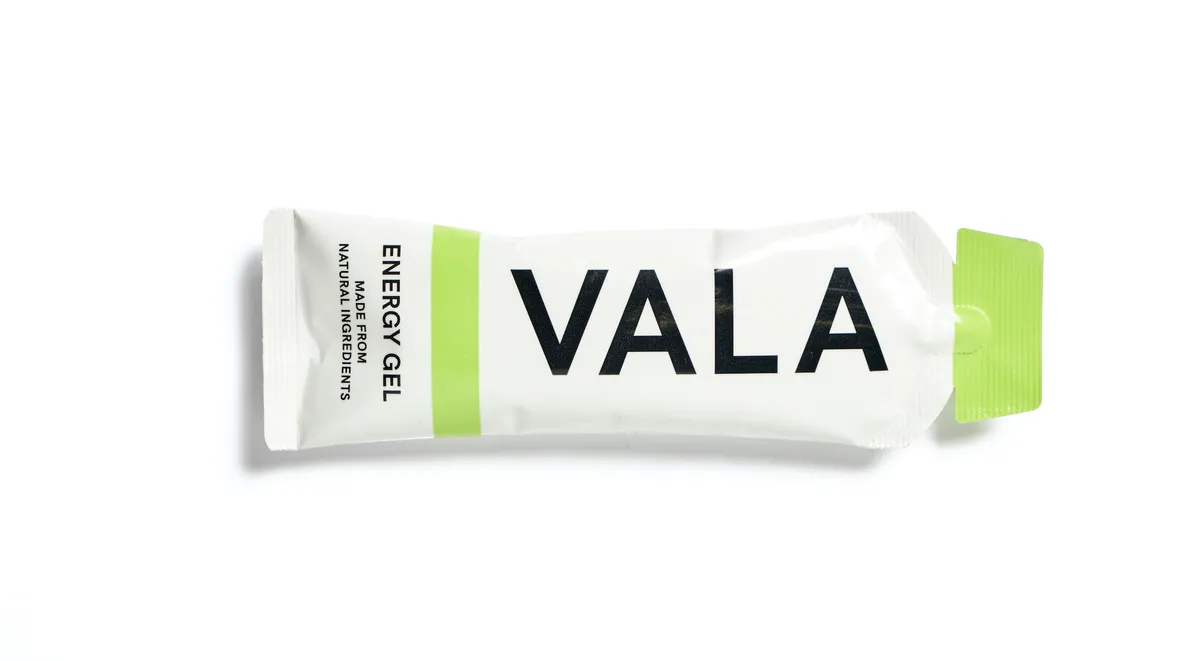
Vala’s a new one to us and hails from Neath in South Wales. The name means ‘chosen’ as, according to the founders, “we want athletes to have a natural choice of gel that helps them to perform at their best”.
That ethos is reflected in the ingredients list, which comprises maple syrup, date paste, lemon juice, lime juice, chia seeds, matcha tea powder and sea salt. There are no hidden preservatives in a 35g sachet that delivers 102kcals from 23.8g of carbs and a near-negligible amount of good fat. Which is all great on paper but what about texture and taste?
In short, fantastic. The texture resembles paste – not surprisingly when you look at the contents – while the taste leans heavily on the date side, too. It flows smoothly, and though a water-chaser helps it’s not essential, so is great on both the bike and run.
Verdict: Not cheap but worth the extra for a top natural gel.
Score: 88%
Nutrition X Energel Caffeine
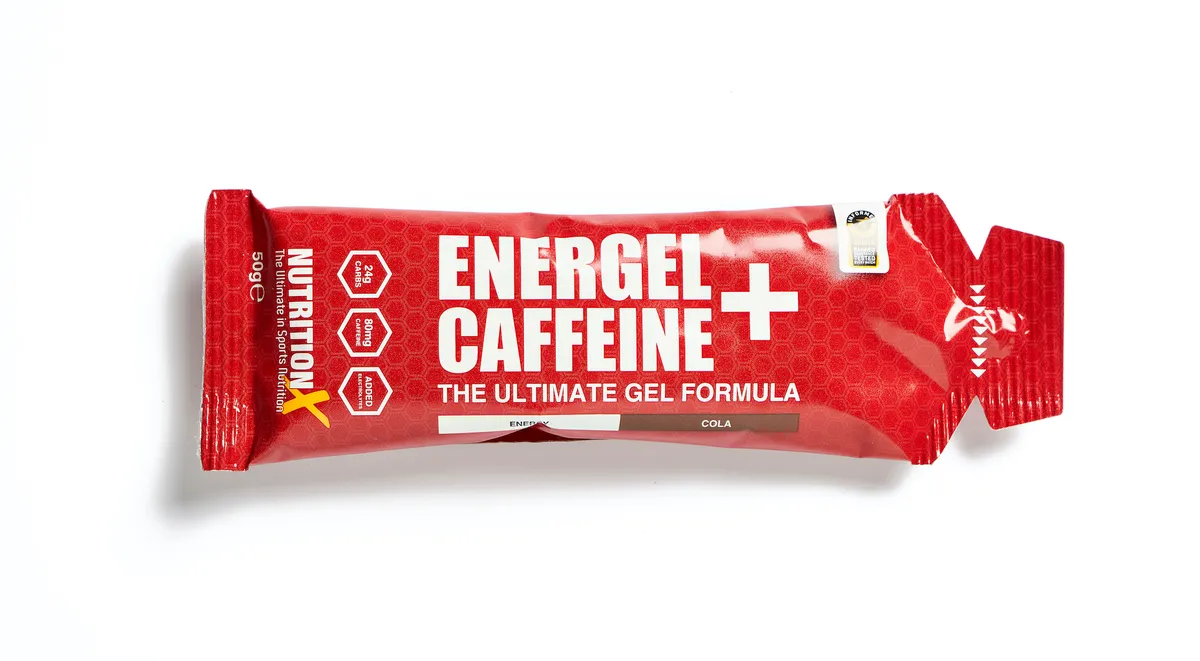
Nutrition X’s 50g gel serving sends 24g (96kcals) of carbs your way via maltodextrin and dextrose. They’re transported into your bloodstream via the same intestinal transporter, though, so unlike partnering with fructose, theoretically you could consume fewer of these per hour than a gel like Precision Fuel’s.
Then again, the dynamic world of racing means textbook laboratory advice often doesn’t transcend to the real world. You also wouldn’t want to overload on these thanks to the 80mg caffeine content. Added electrolytes come in the form of a modicum of sodium, magnesium and potassium.
The cola taste is fine, but we’d have appreciated even more of a cola kick, though the middling texture means you can get away with it on the final discipline without doffing water.
Verdict: Moderate gel; we would have liked a stronger cola taste.
Score: 74%
Mountain Fuel Sports Jelly

UK brand Mountain Fuel’s Sports Jelly has a similar texture to that of Maurten’s gels. When you delve deeper, you understand why because both companies utilise hydrogel technology.
The idea is that pectin encapsulates the multi-source carbohydrate – in Mountain Fuel’s case, maltodextrin and glucose – which purports to transport seamlessly through your inners to reduce the chances of gut distress.
Sceptics question the efficacy of this idea, but we’ve enjoyed Maurten’s products for a while and never had any stomach issues. And we didn’t here, although their traditional Sports Jelly contains just 20g (80kcals) of carbs, the lowest on test.
That said, the Sport Jelly+ option contains 30g. The orange taste is strong and the jelly’s refreshing enough that washing down with water’s not essential.
Verdict: Good texture and taste with an interesting USP.
Score: 82%
